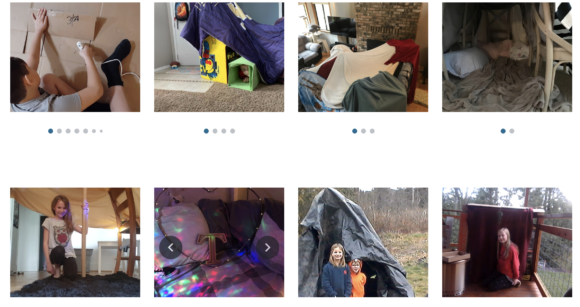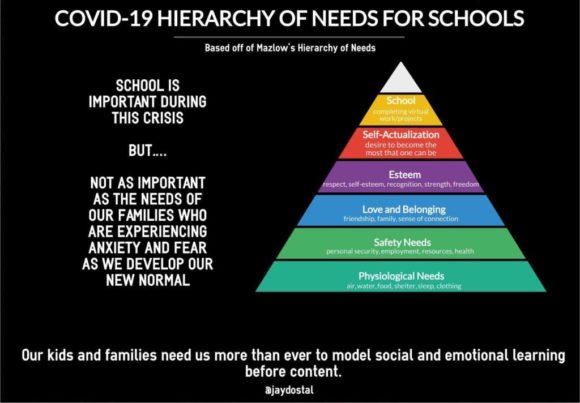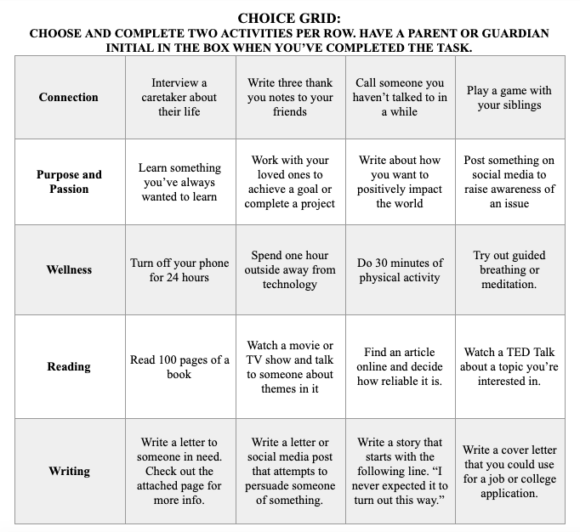
Inequity Should Not Equal Inaction
It’s been a crazy March, to say the least. Here in the state of Washington schools have been closed since March 17th and will not reopen until April 27th at the earliest.Â
Our state education officials have required public schools to provide an educational experience for students.Â
Now, most schools in the state were already doing this or making plans to do this. However, there were a few who were not making plans to provide any educational experience for students, citing equity issues as the justification.
Equity is a lens we must always consider, however, if you have inequities in a virtual school setting, I have news for you, they already exist in your face to face system as well! Â
Jeff Utecht
If anything having to move to virtual school might be shining a light on the inequity that always existed within your school system. It has brought these inequities to the forefront, but that should not be an excuse to not do something.Â
Not doing anything is far worse than trying to do something!
Jeff Utecht
This is why for years when working with school districts who were going 1:1, I would make sure we promoted that going 1:1 is an equity issue! In 2020, learning must include knowing how to learn on a device. For those school leaders (board members I’m talking to you) who were not willing to look at technology as an equability issue before this happened, hopefully, they are reflecting on this now.
With that in mind, I wanted to share with you some more thoughts on this current crisis we’re in and HOW we need to think and rethink as educators about what it means to teach in this current crisis.Â
Let’s start with what we know students and families are going to need in this crisis.Â

This graphic created by @jaydostal can be used to rethink how we teach in a virtual setting.
Let’s start with what we know does not work:Â
PACKETS OF WORKSHEETS: Packets of worksheets do not work for anyone. Whether you have a device or do not have a device, packets of worksheets do nothing educationally for anyone. Years of research on what equates to good teaching and learning show us that packets of worksheets are ineffective, time-consuming, and inauthentic ways to encourage learning.
STICKING WITH YOUR CURRICULUM: No curriculum was ever created for a pandemic. To think you can just keep going in your curriculum is not going to work. Besides, all testing has been canceled for the year. So the curriculum that was based on helping students pass the test is no longer relevant.Â
Think about this teachers:
You have been unleashed from your curriculum that you found to be too rigid and state tests that you felt put too much pressure on you and your students. You have been unleashed to rethink what education can look like in this crisis. On some level, I hope that excites you.Â
Jeff Utecht
STICKING WITH YOUR TIME TABLE: Sticking with your time table is not going to work. You are no longer teaching 6 periods a day. You’re teaching 120 students all at once. If you refer back to the graphic above you’ll notice in times like these, school is not, nor should it be, our top priority. Notice it says school and not learning. Learning can still be a priority but will only be if it does not feel like school, look like school, and students have all their other needs met. As many of us keep reminding you, students and families coming to terms with their ‘new normal’ can take up to three weeks or more.
We need to make the education we always wanted for our students a reality. It’s time to rethink teaching and learning if for no other reason than we must for our students.Â
Everyone while schools are open: "I wonder how we could make interdisciplinary projects a reality?"
— Tyler Rablin (@Mr_Rablin) March 28, 2020
Everyone while we don't have traditional time slots for classes: "How do we put together packets of worksheets for each content?"
UM, WHAT?!#edchat #PBL #remotelearning
So here are some things we know are working that are coming out of virtual gatherings I’m hosting with educators who are in the trenches (listen to this SOSpodcast to hear even more):
I want to highlight one teacher’s journey who I feel is doing things the right way. Shannon Cunningham is a 4th-grade teacher in Enumclaw, WA who is sharing her virtual teaching/learning experience on the web for others to see.
REACH OUT TO YOUR STUDENTS AND FAMILIES: Make a video like Shannon did that allows you to connect with your students and families. Not only did Shannon make a video, but she also called each of her students and families to check-in. Every teacher has access to parent phone numbers and if you know there are families that do not have technology, a phone call might be what they need. A phone call! How simple is that? You have the information already you just need to pick up the phone and call. Doing this not only helps with the psychological and safety needs of a family (referring to the image above) but it allows the teacher to ask about the learning environment. Do they have the Internet at home, if not what do they have? Is there a smartphone in the house with a camera? What do parents need from you in the support of their child in this critical time? You want an equity lens? Reach out and ask parents how can you support them. It doesn’t need to be a phone call. Email works too! You have the information, now it’s time to use it.Â
CREATE A STRUCTURE: We know learning routines are essential, so you need to set up a structure for your virtual learning. Shannon gives out all her directions on Monday for the week so that students and parents can set their schedules for the week knowing what needs to be done. She is using Google Classroom for this but has also set up a Google Site as well that you can find here. By giving a weekly outline at a time she gives students and families choice over time and place of the learning.Â
TEACH AS IF THE WORLD WAS YOUR CURRICULUM: This is the most important part and by far the most difficult part. You have to rethink teaching and learning through a worldly lens. Instead of worksheets, we need to think in terms of real-world applications to the standard and then find ways to make that the learning. In Shannon’s class, she created a “Build a Fort†project where students get to build forts at their home, they then measured the perimeter of the fort, sketch a drawing of the fort, take pictures of their fort, write directions about how to make their fort so someone else could build it, and then research forts in the state of Washington. Of course, this project is going to take multiple days to complete. Shannon is thinking of ways she can cover things she never could before. There is no way in a traditional classroom she could have students create authentic forts in their homes that cover all aspects of their curriculum. But when you think about all the resources that can be found in a home you unlock new potential for learning. What are fun things you did as a kid and what was the learning involved in them? Ask yourself that question, and you start to use the world as your curriculum. You start to rethink teaching and learning in authentic purposeful ways.Â
Our goal is to make learning authentic, purposeful and equitable. All things, I would argue, can not be found in a packet of worksheets for students to do. If you want to give students a packet, give them a packet of choice boards that cover your standards. Tyler Rablin a High School English Teacher shared his:Â

In the end, we must rethink what teaching and learning can be. We must understand we’ve been unleashed from the daily grind and have an opportunity to rethink teaching and learning. We must continue to ask ourselves “What if the world was my curriculum?â€Â







[…] Transcript and Blog post of this episode […]
[…] Inequity Should Not Equal Inaction […]